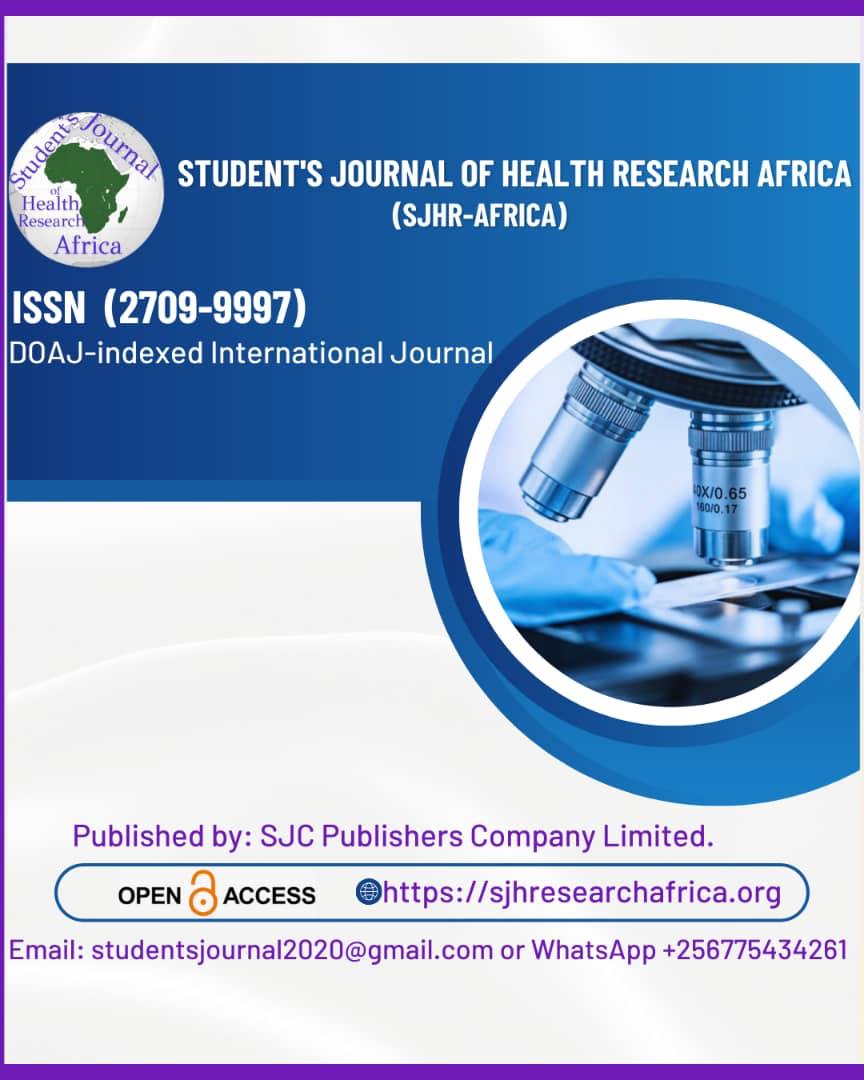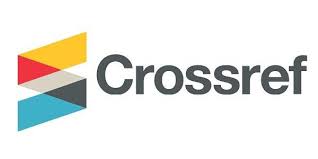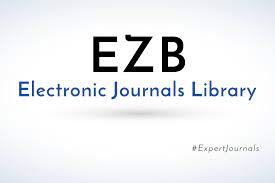Hepatic enzyme alterations as prognostic markers in neonates with hypoxic-ischemic encephalopathy: A hospital-based prospective cohort study.
DOI:
https://doi.org/10.51168/sjhrafrica.v6i6.1794Keywords:
Hypoxic-ischemic encephalopathy, perinatal asphyxia, liver enzymes, SGOT, SGPT, ALP, neonatal prognosis, Sarnat stagingAbstract
Background
Perinatal asphyxia remains a significant contributor to neonatal morbidity and mortality, with hypoxic-ischemic encephalopathy (HIE) being a major sequela. Liver injury is a common systemic complication, and hepatic enzymes may serve as potential biomarkers for the severity of hepatic encephalopathy (HIE).
Objectives: To assess the pattern of hepatic enzyme alterations in neonates with HIE and explore their prognostic value in stratifying disease severity.
Methods
This prospective cohort study enrolled 100 term neonates with perinatal asphyxia. HIE staging was performed using the modified Sarnat and Sarnat criteria. Liver function tests, including serum glutamate oxaloacetate transaminase (SGOT), serum glutamate pyruvate transaminase (SGPT), and alkaline phosphatase (ALP), were measured on Days 1 and 3. Statistical analysis included ANOVA, post-hoc comparisons, and Chi-square tests to evaluate associations with clinical outcomes.
Results
Among the neonates, 33% had HIE Stage I, 39% Stage II, and 28% Stage III. Serial measurements showed significant increases in SGOT, SGPT, and ALP from Day 1 to Day 3 across all HIE stages (p<0.001). Enzyme elevations were most marked in Stage III. Cut-off values for predicting Stage III HIE were SGOT >77.4 U/L, SGPT >90.4 U/L, and ALP >257.1 U/L. Seizure activity (p<0.001) and mode of resuscitation (p<0.001) showed statistically significant associations with HIE severity, while maternal risk factors (p=0.72), mode of delivery (p=0.64), and place of delivery (p=0.59) did not.
Conclusion
Serial hepatic enzyme levels are reliable biochemical indicators for assessing the severity of HIE. Their prognostic relevance supports early stratification and targeted management in neonatal intensive care units.
Recommendations
Regular monitoring of hepatic enzymes in neonates with perinatal asphyxia can aid early detection and management of HIE severity.
References
Gaulee P, Yang Z, Sura L, Xu H, Rossignol C, Weiss MD, Bliznyuk N. Concentration of Serum Biomarkers of Brain Injury in Neonates With a Low Cord pH With or Without Mild Hypoxic-Ischemic Encephalopathy. Front Neurol. 2022 Jul 7;13:934755. doi: 10.3389/fneur.2022.934755. PMID: 35873777; PMCID: PMC9301366.
Shellhaas RA, Kushwaha JS, Plegue MA, Selewski DT, Barks JD. An Evaluation of Cerebral and Systemic Predictors of 18-Month Outcomes for Neonates With Hypoxic Ischemic Encephalopathy. J Child Neurol. 2015 Oct;30(11):1526-31. doi: 10.1177/0883073815573319. Epub 2015 Feb 27. PMID: 25724376; PMCID: PMC4551612.
Forman KR, Diab Y, Wong EC, Baumgart S, Luban NL, Massaro AN. Coagulopathy in newborns with hypoxic ischemic encephalopathy (HIE) treated with therapeutic hypothermia: a retrospective case-control study. BMC Pediatr. 2014 Nov 3;14:277. doi: 10.1186/1471-2431-14-277. PMID: 25367591; PMCID: PMC4289197.
Jacobs SE, Berg M, Hunt R, Tarnow-Mordi WO, Inder TE, Davis PG. Cooling for newborns with hypoxic ischaemic encephalopathy. Cochrane Database Syst Rev. 2013 Jan 31;2013(1):CD003311. doi: 10.1002/14651858.CD003311.pub3. PMID: 23440789; PMCID: PMC7003568.
Sadeghi Moghaddam P, Aghaali M, Modarresy SZ, Shahhamzei S, Aljaboori M. Hypoxic Ischemic Encephalopathy Indicators of Sarnat and Sarnat Scoring in Neonatal Subjects with Perinatal Asphyxia. Iran J Child Neurol. 2024 Winter;18(1):81-91. doi: 10.22037/ijcn.v17i2.36967. Epub 2024 Jan 18. PMID: 38375125; PMCID: PMC10874515.
O'Dea M, Sweetman D, Bonifacio SL, El-Dib M, Austin T, Molloy EJ. Management of Multi Organ Dysfunction in Neonatal Encephalopathy. Front Pediatr. 2020 May 15;8:239. doi: 10.3389/fped.2020.00239. PMID: 32500050; PMCID: PMC7243796.
Doandes FM, Manea AM, Lungu N, Cioboata D, Brandibur T, Costescu O, Hudisteanu A, Boia ER, Boia M. Clinical, biological and electroencephalographic monitoring of newborns with neurological risk in the Neonatal Intensive Care Unit. Exp Ther Med. 2021 Jul;22(1):760. doi: 10.3892/etm.2021.10192. Epub 2021 May 13. PMID: 34035857; PMCID: PMC8135117.
Michniewicz B, Szpecht D, Sowińska A, Sibiak R, Szymankiewicz M, Gadzinowski J. Biomarkers in newborns with hypoxic-ischemic encephalopathy treated with therapeutic hypothermia. Childs Nerv Syst. 2020 Dec;36(12):2981-2988. doi: 10.1007/s00381-020-04645-z. Epub 2020 May 4. PMID: 32367165; PMCID: PMC7649177.
Elsadek AE, FathyBarseem N, Suliman HA, Elshorbagy HH, Kamal NM, Talaat IM, Al-Shokary AH, Abdel Maksoud YH, Ibrahim AO, Attia AM, Abdelhalim WA, Abdelghani WE. Hepatic Injury in Neonates with Perinatal Asphyxia. Glob Pediatr Health. 2021 Feb 1;8:2333794X20987781. doi: 10.1177/2333794X20987781. PMID: 33614837; PMCID: PMC7868451.
Muniraman H, Gardner D, Skinner J, Paweletz A, Vayalakkad A, Chee YH, Clifford C, Sanka S, Venkatesh V, Curley A, Victor S, Turner MA, Clarke P. Biomarkers of hepatic injury and function in neonatal hypoxic ischemic encephalopathy and with therapeutic hypothermia. Eur J Pediatr. 2017 Oct;176(10):1295-1303. doi: 10.1007/s00431-017-2956-2. Epub 2017 Jul 24. Erratum in: Eur J Pediatr. 2017 Oct;176(10):1305-1306. doi: 10.1007/s00431-017-2980-2. PMID: 28741035.
van Laerhoven H, de Haan TR, Offringa M, Post B, van der Lee JH. Prognostic tests in term neonates with hypoxic-ischemic encephalopathy: a systematic review. Pediatrics. 2013 Jan;131(1):88-98. doi: 10.1542/peds.2012-1297. Epub 2012 Dec 17. PMID: 23248219.
Chhavi N, Zutshi K, Singh NK, Awasthi A, Goel A. Serum liver enzyme pattern in birth asphyxia associated liver injury. Pediatr Gastroenterol Hepatol Nutr. 2014 Sep;17(3):162-9. doi: 10.5223/pghn.2014.17.3.162. Epub 2014 Sep 30. PMID: 25349832; PMCID: PMC4209321.
Agrawal J, Shah GS, Poudel P, Baral N, Agrawal A, Mishra OP. Electrocardiographic and enzymatic correlations with outcome in neonates with hypoxic-ischemic encephalopathy. Ital J Pediatr. 2012 Jul 23;38:33. doi: 10.1186/1824-7288-38-33. PMID: 22823976; PMCID: PMC3410800.
Sharma D, Choudhary M, Lamba M, Shastri S. Correlation of Apgar Score with Asphyxial Hepatic Injury and Mortality in Newborns: A Prospective Observational Study From India. Clin Med Insights Pediatr. 2016 May 10;10:27-34. doi: 10.4137/CMPed.S38503. PMID: 27199578; PMCID: PMC4863868.
Downloads
Published
How to Cite
Issue
Section
License
Copyright (c) 2025 Dr . Eaka Mahesh, Dr. Ragini Mutukulla, Dr . Durgesh Velupula, Dr. Bindhu Vechangi

This work is licensed under a Creative Commons Attribution-NonCommercial-NoDerivatives 4.0 International License.






















